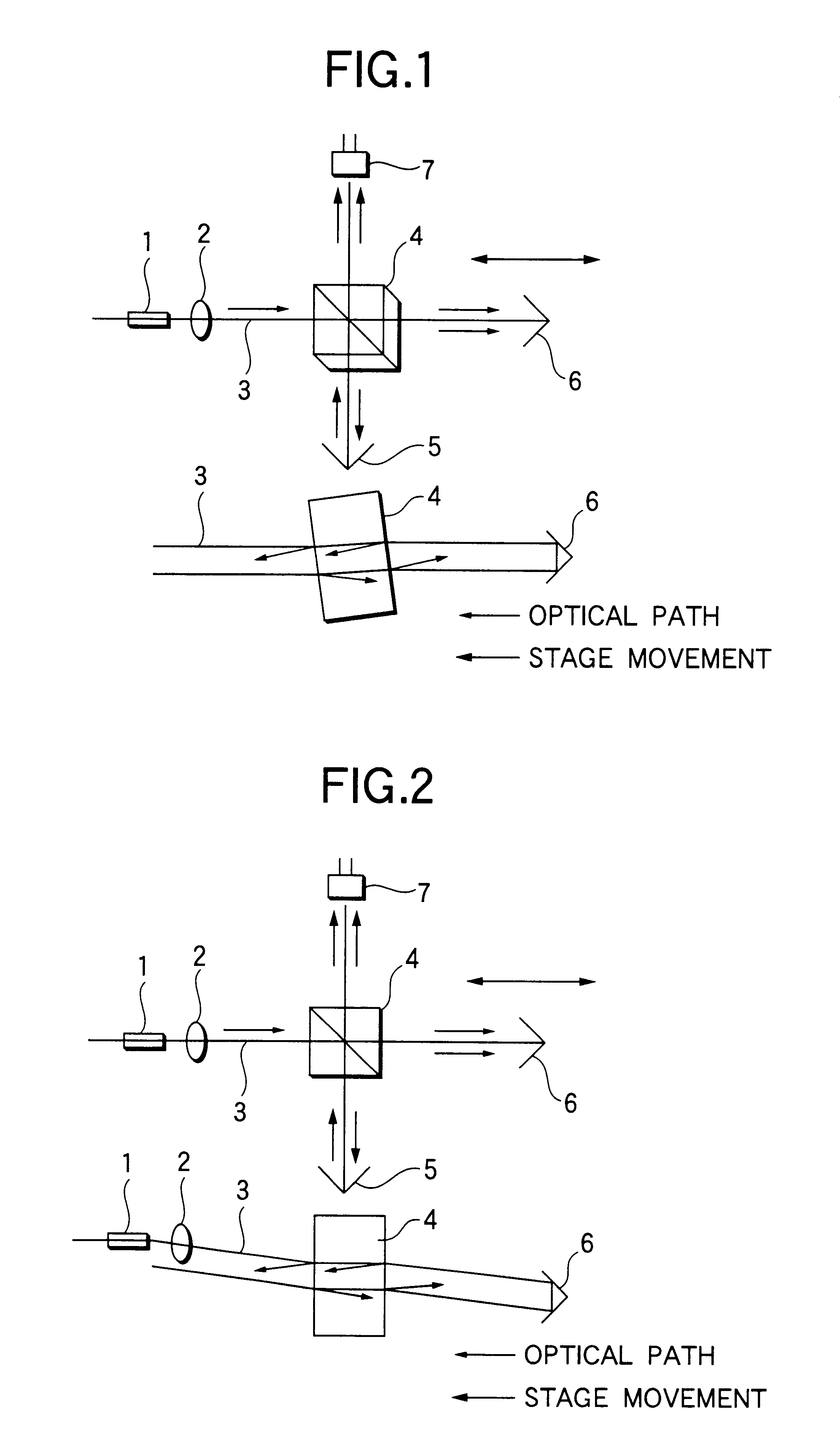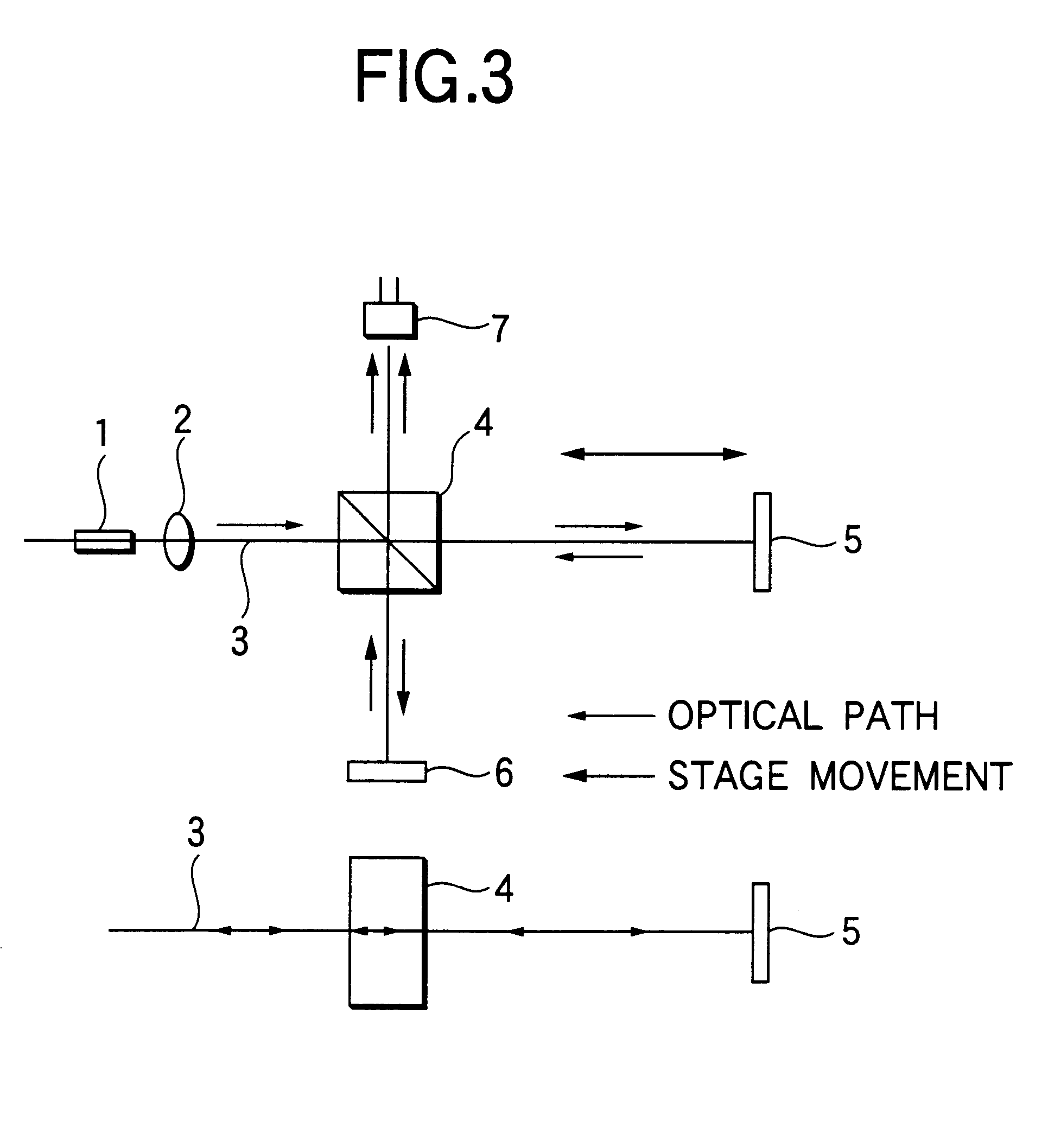Optical interferometer
an interferometer and optical technology, applied in the field of optical interferometers, can solve problems such as difficult stable measurements
- Summary
- Abstract
- Description
- Claims
- Application Information
AI Technical Summary
Benefits of technology
Problems solved by technology
Method used
Image
Examples
first embodiment
Initially, FIG. 1 is a view showing an outline structure of an optical interferometer according to a first embodiment of the present invention. As well as the conventional optical interferometer (refer to FIG. 3), in FIG. 1, numeral 1 is an optical fiber for outputting a light beam to be measured, numeral 2 is a lens for converting the light beam from the optical fiber into a parallel light beam as an incident light beam 3, numeral 4 is a beam splitter for branching the light beam to two optical paths perpendicular to each other to make a reflected light beam and a transmitted light beam, numeral 5 is a first reflection unit for reflecting the reflected light beam to return the reflected light beam to the beam splitter, numeral 6 is a second reflection unit for reflecting the transmitted light beam to return the transmitted light beam to the beam splitter, and numeral 7 is a light receiver for receiving the wave-combined light beam from the beam splitter 4.
The reflected light beam r...
second embodiment
FIG. 2 is a view showing an outline structure of an optical interferometer according to a second embodiment of the present invention. As well as the conventional optical interferometer (refer to FIG. 3), in FIG. 2, numeral 1 is an optical fiber, numeral 2 is a lens, numeral 3 is an incident light beam, numeral 4 is a beam splitter, numerals 5 and 6 are reflectors (the first and the second reflection units), and numeral 7 is a light receiver. The elements 1-7 has the same structure as those of the first embodiment of the invention.
According to the second embodiment, central axes of the optical fiber 1 and the central axis of the lens 2 are shifted from each other. Accordingly, the incident light beam 3 which is made a parallel light beam by the lens 2, is incident not perpendicularly to the beam splitter 4, but with an angle with respect to the normal line of a incident surface of the beam splitter 4. Therefore, the same effect as in the first embodiment can be obtained.
In this conne...
PUM
 Login to View More
Login to View More Abstract
Description
Claims
Application Information
 Login to View More
Login to View More - R&D
- Intellectual Property
- Life Sciences
- Materials
- Tech Scout
- Unparalleled Data Quality
- Higher Quality Content
- 60% Fewer Hallucinations
Browse by: Latest US Patents, China's latest patents, Technical Efficacy Thesaurus, Application Domain, Technology Topic, Popular Technical Reports.
© 2025 PatSnap. All rights reserved.Legal|Privacy policy|Modern Slavery Act Transparency Statement|Sitemap|About US| Contact US: help@patsnap.com



